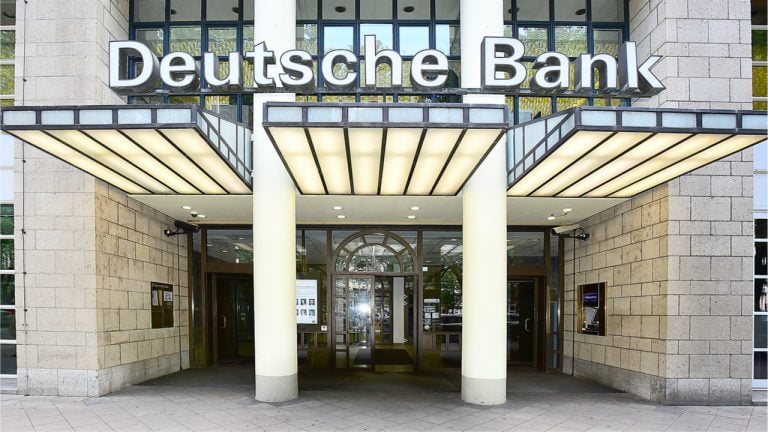
The second-largest cryptocurrency sells off in line with Bitcoin as traders assess the latest U.S. inflation data.
Ether (ETH) perhaps had the most bullish outlook entering the July session, with a key technical update dubbed EIP-1559, promising to make its native token ETH scarcer through the network's first-ever burning mechanism.
But so far into the month, the second-largest cryptocurrency by market cap has vastly tailed its top rival Bitcoin. The positive correlation was visible on July 13, following the New York opening bell, when Ether plunged below $2,000 to hit its two-week low in sync with Bitcoin, which slipped slipping below $32,500.

As it happened, the ETH/USD exchange rate reached its intraday low of $1,961.10 following a 3.43% drop. The pair's modestly bearish move locked step with Bitcoin, which apprehensively fell as traders assessed the latest U.S. inflation data.
The U.S. consumer price index ticked up 0.9% in June to hit 5.4% year-over-year, marking its highest level since 1991. Traders sold off Bitcoin and other cryptocurrencies on the news, pointing to fears that a continuously rising inflation rate would prompt the U.S. Federal Reserve to withdraw its quantitative easing policies.
Macro inflation vs. Ethereum deflation
In detail, the minutes of the Federal Open Market Committee's June meeting revealed officials in favor of at least two rate hikes by the end of 2023, providing the inflation rate runs too hot above their 2% target. The central bank has been maintaining interest rates below 0.25% since March 2020, which sapped investors' dollar demand and, in turn, had boosted demand for so-called safe-haven assets, including Bitcoin.
Ether, whose one-year correlation coefficient with Bitcoin stands at 0.64, according to Crypto Watch, surged all across 2020 and in the first quarter of 2021 on similar macroeconomic fundamentals.
The cryptocurrency, however, logged better gains than Bitcoin, owing to its role in a flurry of booming crypto sectors, including decentralized finance (DeFi), nonfungible tokens (NFT), and stablecoins.

But the Ethereum network also suffered from technical setbacks in the form of a jammed bandwidth. An overloaded blockchain prompted miners—entities that process and add transactions to Ethereum's public ledger—to raise their fees. In some cases, users were forced to pay more gas fees than the amount they were transferring.
The problems appear to have come to a final resolution as Ethereum intends to switch its protocol from a miner-friendly but energy-intensive proof-of-work to a faster and cheaper proof-of-stake. In detail, the so-called London hard fork, which includes five improvement proposals, expects to counter those inefficiencies.
One of the improvement protocols, called EIP-1559, introduces a new fee structure to make Ether less inflationary.
It proposes to burn a portion of the fee collected in ETH, thus adding deflationary pressure on the cryptocurrency. In addition, the upgrade replaces miners with validators. In doing so, Ethereum requires each validator to lock at least 32 ETH to run its proof-of-stake network.
That also put a good portion of ETH supply out of circulation, making it as scarcer as Bitcoin.
For Konstantin Anissimov, executive director at CEX.IO, rising macro inflation provides more bullish opportunities to Ether as much as it does to Bitcoin. He adds that he anticipates the ETH/USD exchange rate to hit $3,000 on an anti-inflation narrative.
"As things stand, the Federal Reserve has increased the size of its balance sheet from early 2020 to over $8 trillion—a substantial rise," he explained, adding:
"The reduced pricing is an avenue for market investors to accumulate the coins at a discount while trusting in their abilities to serve as the right hedge against the inherent inflation."
And so it appears, Ether accumulation is happening at a rapid pace. According to CryptoQuant, a South Korea-based blockchain analytics firm, the total ETH reserves across all the crypto exchanges have dropped by more than half in the wake of its Q2/2021 price correction from $4,384-top to $1,700-low.

Correlation risks
Ether's correlation with Bitcoin remains a bottleneck as ETH eyes further highs. Nevertheless, Josh Arnold, a financial analyst associated with Seeking Alpha, highlighted that Ether and Bitcoin are sometimes negatively correlated. A 0.64 correlation efficiency is not perfect.
Arnold instead focused on Ether's price chart structure, noting that the cryptocurrency formed a descending triangle pattern upon topping out in mid-May 2021. Descending triangles are typically continuation patterns that lead the prices in the direction of their previous trends after a small period of consolidation.

Arnold noted that Ether bulls need to hold Triangle support to maintain their upside bias or they would risk losing the market to bears. He explained:
"A descending triangle break to the downside would see Ethereum plumb new 2021 lows and try to find support again, but at much lower levels."
But given Ether's resilience against bears, Arnold anticipated that the cryptocurrency might end up rising higher.
The views and opinions expressed here are solely those of the author and do not necessarily reflect the views of Cointelegraph.com. Every investment and trading move involves risk, you should conduct your own research when making a decision.





